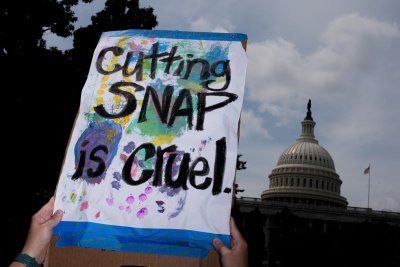Netflix ad ambitions grow as low-cost plan surges to 190 million viewers
Netflix on Wednesday touted a surge in popularity for its low-cost streaming plan with ads, as it looks to tap into the lucrative the world of brands.
The streaming giant said it now has more than 190 million monthly active viewers watching ads through a plan that costs $7.99 a month. The lowest cost ad-free plan costs $17.99 a month.
In May, Netflix said it had 94 million monthly active users watching ads through the cheaper plan. That translated to roughly 170 million monthly active viewers, the company said at the time.
However, the Los Gatos, Calif.-based company is now using a different methodology to measure its audience watching ads, making exact comparison’s difficult.
Netflix now defines monthly active viewers as customers who watched at least 1 minute of ads on Netflix per month. It then multiplies that by the estimated average number of people in a household. Previously, Netflix had measured monthly active users based on the number of Netflix profiles watching content with ads.
The streamer said its previous measurement didn’t illustrate all the people who were in the room watching.
“Our move to viewers means we can give a more comprehensive count of how many people are actually on the couch, enjoying our can’t-miss series, films, games and live events with friends and family,”wrote Amy Reinhard, Netflix’s president of advertising in a post on the streamer’s website on Wednesday.
On Wednesday, Netflix executives said the growth in ad viewers was in line with their expectations.
“We are very satisfied with where we are at,” Reinhard, said in a press briefing. “We think there is a lot of opportunity to grow on this plan around the world, and we’re going to continue to make sure that we are offering our customers a great experience and a great buying experience on the advertising side.”
Netflix began its foray into ad-supported streaming in 2022, after it received pressure from investors to diversify how it makes revenue. Previously, Netflix mainly made money through subscriptions and for many years had been ad-adverse.
The company said last month it was on track to more than double its ad revenue in 2025, but did not cite specific figures. Netflix Co-CEO Greg Peters said in an earnings presentation in October that the ad revenue is still small relative to the size of the company’s subscription revenues, but advertisers are excited about Netflix’s growing scale.
“We see plenty of room for growth ahead,” Peters said.
On Wednesday, Netflix said it is expanding its options for advertisers, including demographic targeting in areas such as education, marital status and household income.
Netflix also said it has partnered with brands including brewing company Peroni Nastro Azzurro in ads for its romantic comedy series “Emily in Paris,” and tested dynamic ad insertion with programs including WWE Raw this quarter and will offer that feature in the U.S. and other countries for NFL Christmas Gameday.
Many streamers have been increasing the cost of their subscriptions in order to become more profitable. Earlier this year Netflix raised the prices on plans.


